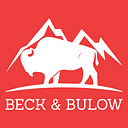Native To America Hunting, Cooking & Butchering Bison Meat
The bison was a pillar of life for Native Americans, in particular the peoples of the western plains. Every need they had was met by these large, shaggy animals. Their strength was emulated by warriors and some tribes honored each animal’s slaughter with prayer. It’s estimated that bison herds once numbered as high as 60 million. They were the largest population of a wild animal in the history of the world. Bison meat was relied on heavily as a food source, and prior to colonial times was a plentiful one.
Buffalo Meat From Our Ranch In New Mexico
Sometimes bison were killed using a method learned by watching coyotes. One animal would be separated from the rest of the herd, then chased in circles until exhaustion set in, causing the bison to either collapse or give up. However, other techniques were developed that could be used to slaughter enormous numbers of buffalo at once. Often, these tactics would produce such huge amounts of meat that there would be far more than the tribe could consume.
Also Read: Bison Tallow: The Healthy Fat That Your Body Craves
The buffalo would be strategically driven off of cliffs in large numbers. One method was for a warrior to wear a buffalo skin robe, covering his head entirely and effectively disguising him as one of the herd. He would position himself carefully, at a slight distance between the herd and the edge of the precipice. The other hunters would surround the group of buffalo from the back, and when a preplanned signal was given, rush the herd from behind.
As the animals began to stampede, the decoy would charge ahead, leading them towards the cliff. He would tuck away at the last second into a hidden crevice while the animals, unable to stop with the rest of the panicking herd behind them, careened off the precipice. The role of the robed decoy could easily turn fatal if they were forced off the cliff or crushed underneath the hooves of the enormous creatures. There were some groups of Native Americans who strategically used fire to run many buffalo off a cliff at once.
Also Read: Getting To Know The Bison: Awesome Facts About Our Favorite Animal
The Highest Quality Bison Meat Straight To Your Door
After the kill, the hunters would make their way down to the land beneath the precipice where camp would be made. Tipis would be erected and the work of butchering the buffalo meat would commence. There’s archaeological evidence of one technique where the first cut would be made down the back, exposing the tender cuts of meat beneath the surface. Next, the meat of the large and muscular hump would be revealed by removing the front legs and shoulder blades. When these cuts were made it would allow access to the rib meat and nutrient rich organs. After butchering these areas, the spine was severed and the pelvis and hind legs removed. Lastly, the neck and head were cut away as one piece.
Buy Meat Online From The Best Meat Delivery Service
The hump was considered to be choice meat and was sometimes prepared cut into steaks, sewed up in a piece of hide and cooked in an oven dug into the earth. The fatty tongue was considered by some to be a delicacy. It was said that the different parts of the bison had energetic medicinal properties for the corresponding areas of the human body. Eating the tongue could heal imbalances with communication and singing, and all of the organs were highly valued for these qualities as well as their bountiful nutrition.
Also Read: Men’s Health And Bison Meat: How It Can Help
There is a common Native American preparation utilizing tougher areas of meat known as wasna, or pemmican. A combination of dried elk, deer or buffalo meat pounded together with tallow and chokecherries. This nourishing food could last for years and easily be taken along while traveling. A convenient meal that could be considered the OG predecessor of energy bars as we know them today.
Colonial Waves of Change
As time passed and colonial settlers began to arrive in the land of the bison, the population plummeted. Some of this mass killing of the buffalo was a result of military involvement and attempts to weaken native tribes by eliminating their main food source. There’s also speculation that as Native Americans began to use firearms, overhunting became commonplace with these newfound powerful weapons. By the 1880s, there were fewer than 100 bison in the wild. They very nearly went extinct before conservation efforts were made, restoring the population enough to stabilize from this threat. Today there are around 500,000 bison in America.
Also Read: Women’s Health: Benefits of Eating Grass-Fed Red Meat
At Beck & Bulow, we know that one of the most effective ways to continue to increase the bison population is by increasing the demand for their meat. We’re proud to offer the absolute best quality bison, elk, wild boar, lamb, grass-fed beef and chicken, delivered straight to your door.
